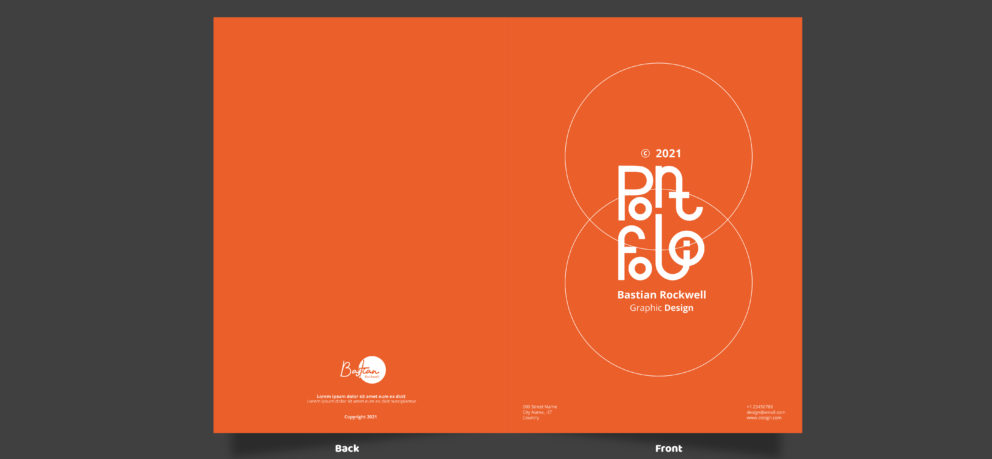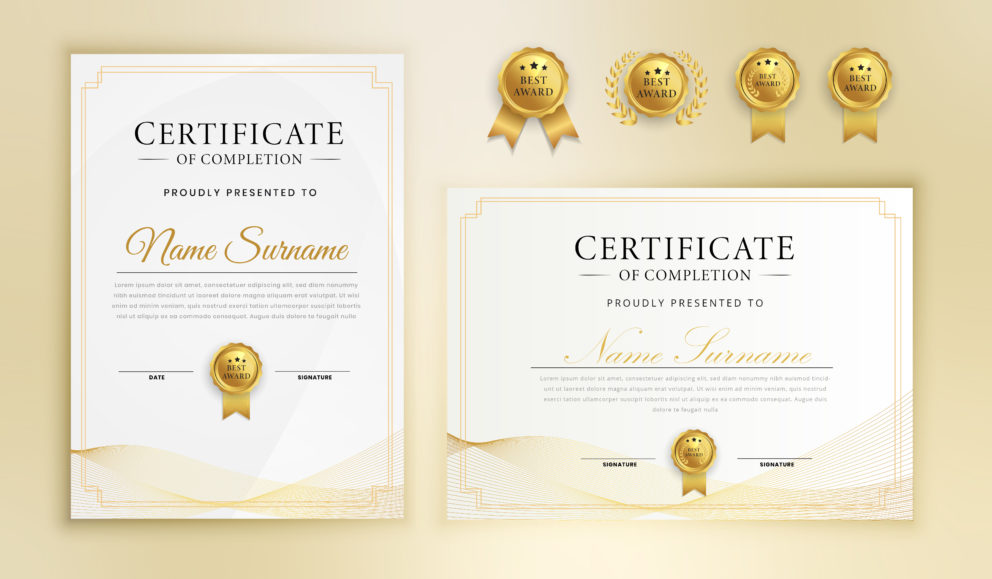5 Tips to Create Your Own Architecture Portfolio
Every architect dreams of getting a position in a famous firm or an internship at an established studio. However, you need to know how to present your work and achievements.
It is difficult to create a good architecture portfolio, especially when you don't know what to list in it or add personal information. Should your online portfolio be available to everyone, or will you only share it with a potential employer? You'll find tips and answers to these and other questions will be answered in the article below.
A crucial part of your architecture portfolio is the focus on effective architecture solutions and your capabilities. If you find yourself out there on your own, troubled with portfolios and lack of inspiration, then we can help you. Below you'll find five very good tips from professionals and creative designers on how to present your architecture portfolio to the world, which you can later use while working with our portfolio creator .
Design your online portfolio
As an architect, you need to present a visual portfolio - and so, your online portfolio should be an integral part of your resume. An employer will look at your regular resume and put it aside. Therefore, you need to illustrate it with as many accomplishments as possible. Your college degree is much less important than your actual skills in the profession and the examples of your actual achievements and accomplishments.
For architecture students and prospective architects, printed portfolios consisting of a series of basic sheets or bound into a book are still the traditional and required architecture portfolio format. Even when you prepare a portfolio website, many stick to the design of a traditional book. Established studios frequently design and print their own portfolios, which may be used as a client brochure ...or just as a souvenir or a promotional item.
Therefore, you should design your portfolio online in a brochure form as well. You can integrate your resume and project brochure using Flipbooks from Publuu. This tool will let you convert your digital resume and your designs saved as PDF, and present your achievements in one-of-a-kind flipbook format that is sure to make you stand out from the other architecture portfolio ideas. Publuu offers great image quality and a fantastic page turning effect, which will make your architecture portfolios look like a classical brochure, but you will be able to embed it on your website or e-mail.
Uploading your architecture portfolio to Publuu's servers will also allow you to get rid of the most common problem of architects and graphic designers - too large files. File size is a problem when sending your projects via email, but Publuu does not have this limitation. This way you will be able to present even very large files to your audience, who won't be bothered by file size error since they will view your architecture portfolio online.
Using Publuu to create your digital flipbook gives you also freedom in designing your PDF. Ordinary portfolios might not be viewable on the go or at work, but Publuu files are presented to the potential customers and fellow architects 24/7. And if should they wish doing it, they can always download the document and print the images they find intriguing.
Publuu’s architecture portfolio example
How should your architecture portfolios look?
You may have already heard that an architect's job is a balance between creativity and technology. While creativity is important in architecture and design and you should show that in your portfolio, it can't come at the expense of the work your architecture portfolio is meant to showcase. You need to showcase your skills - if you want to show that you are able to develop technical details, just one or two key examples will be enough. Similarly, while photorealistic renders are impressive, professionals will pay more attention to schematics, plans and your technological projects rather than flashier graphic design examples.

When you plan an architecture portfolio brochure in InDesign or another page creation program, avoid clutter. Use the options available when you process the documentation into images, and rely on white space. White space is the wise use of space between paragraphs and images - your graphics need to be able to breathe and the reader can only focus at one thing at a time. A successful portfolio uses minimal amounts of flashy background. Add some space between details and you'll be surprised how clearer the images look!
If you use little blank space, make sure the entire layout has a clear structure so that the portfolio content is easy to digest by your potential employer. If you rely on consistent layout principles, it will give your portfolios a sense of cohesion. There are many professional layout templates online that will help you create an architecture portfolio that can be presented to any respectable studio or firm. You can find more examples on our website.
Remember that even the best architects can make spelling mistakes that make an extremely bad impression. Ask friends to check your work -- especially if you are creating an architecture portfolio in a language that is not your own. This also goes for your website and any place you're presenting your achievements.
Design your cover well
It's a good idea to start your architecture portfolio with a good cover page. They say you can't judge a book by its cover, but a good cover page should encourage people to read the portfolio of a creative applicant.

Source: Freepik
Good cover of an architecture portfolio can demonstrate the first impression of you as an architect, so it is worth thinking about how you want it to look. A well-designed, successful cover will give a potential client from an architectural firm an idea of the type of work contained within, and your design and presentation skills.
The process of preparing a good cover page of an architecture portfolio is easy enough. At a minimum, the title (often enough, it's just enough to write Portfolio ) and your full name should be placed on the front cover. Add an image that symbolizes you and your work as a background (see below to learn about what a star project is). You can also state your current position in the company, your academic titles, if you are a student, you can state your university.
The second or third page of the cover is a great place to put your resume and similar personal details, like a link to your website. The printed brochure will look great and if you present it as a flipbook , it will create a perfect impression on your potential employer.
Adjust your architecture portfolio to the reader
Inexperienced architects frequently include everything they have ever created in their architecture portfolio, all their drawings, sample pages of documentation, and all the unnecessary details showing their techniques and skills. This is not a wise strategy. When confronted with too many images, the prospective customer will be overwhelmed and ignores your best architectural work.

Having multiple architecture portfolios is the best option: When submitting your documents and application to a firm, you should highlight your portfolio during the interview and send a brief email with the basic version of your architecture portfolio. Then you'll create an extended version that you can tailor to your exact industry. If you want, you can host the complete version of your digital portfolio on your website.
Along with your CV/resume, you will probably also send a sample basic architecture portfolio to the architecture firm. It should be minimal: a thorough selection of your best and most relevant work, ranging from two to five A3 or A4 pages in length (three recommended). Limit yourself to one or two images, sketches or drawings per page because it is about quality, not quantity. If a firm is interested, they will get in touch with you. You can use Publuu's embed functionality to submit a link to your website, so that they could learn more about your work. Students can close their portfolio with commendations from their professors.
Your basic architecture portfolio may have piqued their interest, but the firm will be more interested in your more complete architecture portfolio, which demonstrates your suitability for the position they are seeking. A more complex architecture should contain examples of all the major projects and areas in which you have worked and/or participated. Always be truthful about your role on the job, what you did there, and what you learned from the entire process.

Creating an effective portfolio is simple: start your design strategy from scratch - and establish your design skills when showcasing your techniques and architecture skills to others using your architecture portfolio. Imagine you don't know anything about a fellow architect. What could interest you in their work? Answer this, apply it to your own work and put it on the initial pages of your architecture portfolio.
What to place in your architecture portfolio?
As you progress through your education and the architecture profession, the content of your architecture portfolio will also change. When you're a student, your portfolio will mostly consist of credit work and documentation of internships outside of school. You can present your best student work and any awards and honors you earned. While this is fine, remember to emphasize your lack of experience and willingness to learn.
As you gain more practical skills, you will include more accomplishments and projects in your architecture portfolio, creating a mix of academic and professional experience. Once in a while you might include a sketch that showcases your creativity if you're really passionate about -- but you can also save it for your complete architecture portfolio. As your experience increases, you should showcase only the completed and built projects. Professional architects' portfolios must focus primarily on completed projects, rather than present theoretical drawings or creative exercises.
However, beyond the type of projects presented, all architects should strive to demonstrate a very similar skill set, which includes: Sketching and drawing by hand and CAD, creating models (including in 3d), developing details. You can also show off your industry knowledge in your architecture portfolio - including conferences, awards and certifications.

Many employers also value a creative person - if you work in graphic design or other visual arts, such as photography or sculpture for example, you can mention that in your full architecture portfolio.
Mention your soft skills like interpersonal abilities, presentation experience or driving license in the resume section rather than in the architecture portfolio proper... unless they suddenly become relevant in your professional life. There's nothing wrong in including pictures of your team showing trust and respect if you're an accomplished team leader, for example.
Find the star of your architecture portfolio
Make one outstanding project the centerpiece of your architecture portfolio. It's your greatest and most comprehensive architecture project you ever created. Better projects will take its place as your career advances and develops, but it will always represent the apex of your total skill level and inventiveness. It's here to make your audience intrigued. Your portfolio must instantly catch their attention so that your work does not appear obsolete or similar to that of others. However, don't start with it - it needs to be presented as a second one, to maintain the flow of your personal story.
Include more outstanding ideas in your architecture portfolio in addition to your finest project. These may have been once "excellent" or "great", but since they aged and you gained new skills, today they are just "good". A handful of such examples should be in your archive to round out the remainder of your architecture portfolio. Put the "second best" idea as the first one, showcasing its drawings, then smoothly transit to the star design.
Finish your architecture portfolio with an unexpected twist. You might end with a presentation of a project that demonstrates your unique abilities and distinguishes you from the competitors. Show off your interior design skills if you're in the construction industry. Or perhaps you worked on a book project - show that you can do layout. You never know when mentioning your side hustles will pay off. This is also relevant for students who can use their spare time... and can practice their creativity and style.
Tell a story of your achievements

Your portfolio is a document that is supposed to show who you are and what you have accomplished in life. If you present a mediocre architecture portfolio to a company or potential employer, they will read it, admire the images, flip through pages and put it aside. But if you tell a story with it, they will remember your portfolio to the end.
When creating an architecture portfolio, think about the story structure of your favorite books, movies and TV shows. A well-told story draws the reader in and captures their attention. Why? Because these screenwriting people know story structure and are masters of presenting ordinary events as great stories. There is almost always a three-act structure in this type of storytelling: beginning, middle, end. This can also apply to architectural portfolios.
The beginning of your architecture portfolio is you. Every story starts with "there once was a person". You are this person. When starting, focus on a resume and a presentation of your capabilities as an architect - this should not be the star of your architecture portfolio yet. Start with a solid project.... then move on to the best one. Then present good projects, interesting images on subsequent pages, slowly keeping the attention drawn in by the star project. And finally, offer them a twist using that unexpected project.
You can tell a story using architecture portfolios using many different story-telling techniques, too: for example, you can start with your early projects in chronological order and go to the top project you can offer - but this can get boring fast. Your architecture portfolio should include only the best examples to create a story that will get the attention of potential architectural firm.
We hope you enjoyed these tips to prepare a spectacular architects' portfolio. You can publish these projects using Publuu and embed them on your website. If you found our article useful when creating an architecture portfolio, feel free to share it on social media.
We can't wait to see what you create and build!